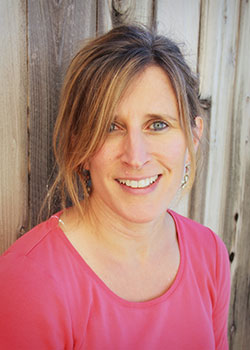AAC Lab
People
Students
- Quinn Hollerbach
- Shannon Bowman
- Holly Knox
- Ji Sun Park
- Shelby Fleming
- Deyvy Armendariz
- Kylee Kennedy
- Valerie Prieto
Topics Studied
Research in the AAC lab focuses on building effective interventions for children with severe communication disorders who have little to no intelligible speech, in close collaboration with their families. These children benefit from using augmentative and alternative communication (AAC). AAC involves using communication boards and electronic voice output devices that contain photographs, line drawings, and written words, which provide children with viable communication modes. Language skills are the key to achieving academic and social success, so our main focus is to evaluate ways to support the early and ongoing language development of these children.
Current Projects
We currently are collecting data for a 5-year, NIH-funded project entitled “Word by Word: Building Sentences with Children who use AAC.” This project is an “AAC ColLABoration” with the University of Central Florida, with Dr. Jennifer Kent-Walsh (PI) and Nancy Harrington (project manager). Dr. Binger and Dr. Kent-Walsh collaborate on the majority of their research projects. This particular project consists of two randomized controlled trials, both evaluating the effects of an AAC intervention program on the early multi-word utterances of children who use AAC. Study 1 focuses on 3- to 4-year-old children with intact receptive language who have severe speech disorders, and Study 2 focuses on 3- to 5-year-old children with Down syndrome.
Dr. Binger also is collaborating with her colleagues Jessica Mount Matney and Kitty Edstrand from the New Mexico School for the Blind and Visually Impaired. This project focuses on using a clinician-friendly cueing hierarchy to increase the intentional communication behaviors of children who are presymbolic.
Selected Publications
Binger, C., *Richter, K., *Taylor, A., *Williams, E., *Willman, A. (2019). Error patterns and revisions in the graphic symbol utterances of three- and four-year old children who need augmentative and alternative communication. Augmentative and Alternative Communication, 35 (2), 95-108. doi: 10.1080/07434618.2019.1576224
Kent-Walsh, J., & Binger, C. (2018). Methodological advances, opportunities, and challenges in AAC research. Augmentative and Alternative Communication, 34, 93-103.https://doi.org/10.1080/07434618.2018.1456560
*Binger, C., Kent-Walsh, J., King, M., & Mansfield, L. (2017). Early sentence productions of three- and four-year-old children who use augmentative and alternative communication. Journal of Speech, Language, and Hearing Research, 60, 1930-1945. DOI: 10.1044/2017_JSLHR-L-15-0408
*Binger, C., Kent-Walsh, J., & King, M. (2017). Dynamic assessment for three- and four-year old children who use augmentative and alternative communication: Evaluating expressive syntax. Journal of Speech, Language, and Hearing Research, 60, 1946-1958. doi:10.1044/2017_JSLHR-L-15-0269
*Binger, C., Kent-Walsh, J., King, M., Webb, E., & Buenviaje, E. (2017). Early sentence productions of five-year-old children who use augmentative and alternative communication. Communication Disorders Quarterly, 38, 131-142. http://doi.org/10.1177/1525740116655804
*Binger, C., Ragsdale, J., & Bustos, A. (2016). Language sampling for preschoolers with severe speech disorders. American Journal of Speech-Language Pathology. http://doi.org/10.1044/2016_AJSLP-15-0100
*Kent-Walsh, J., Malani, M., Murza, K., & Binger, C. (2015, invited). Effects of communication partner instruction on the communication of individuals using AAC: A meta-analysis. Augmentative and Alternative Communication, 31, 271-284.
*King, M., Binger, C., & Kent-Walsh, J. (2015). Using dynamic assessment to evaluate the expressive syntax of five-year-old children who use augmentative and alternative communication. Augmentative and Alternative Communication, 31, 1-15. DOI: 10.3109/07434618.2014.995779 http://www.ncbi.nlm.nih.gov/pmc/articles/PMC4634893/
*Kent-Walsh, J., Binger, C., & Buchanan, C. (2015). Teaching children who use augmentative and alternative communication to ask inverted yes-no questions using aided modeling. American Journal of Speech-Language Pathology, 24, 222-236. DOI: 10.3109/07434618.2015.1052153


